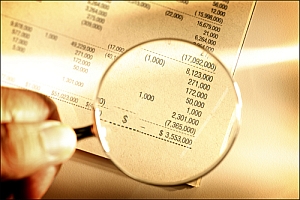Engineers and chemists at South Dakota School of Mines and Technology (SDSMT) in Rapid City and University of South Dakota in Vermillion devised invisible, nanoscale high-density bar codes that can authenticate paper documents and other solid objects. The team published its findings in the journal Nanotechnology, published by Institute of Physics (free registration required).
The bar codes use a two-dimensional design similar to the familiar quick-response (QR) codes found in advertising and distribution. The code image is made of nanoscale particles — 1 nanometer equals 1 billionth of a meter — mixed with blue and green fluorescence ink. The image, while printed, is invisible until illuminated with a laser light. The code can be generated with computer-aided design software and printed on a substrate with an aerosol-jet printer.
In normal light, the code image is invisible but can become visible when near infrared light is passed over it. In this process, called upconversion, the nanoparticles absorb photons at one wave length and subsequently emit photons at a shorter wave length. Once illuminated by the near infrared light, the code image can be read by a smartphone in the usual manner.
The nanoparticles in the code are both chemically and mechanically stable, to withstand the day-to-day stresses and strains of paper documents. The researchers tested the stability of the codes by printing the image on a piece of paper and then randomly folding it 50 times — after this exercise, the code was still readable.
The researchers also printed the code image on glass and a flexible plastic film, which shows it has potential for a variety of solid commercial goods. The invisibility of the code also makes it useful to authenticate items where physical appearance is important. The team says the entire process from design to printing to scanning took about 90 minutes, but once the image file for the code is created and printing is done in higher volumes, the process can be compressed to 10 to 15 minutes.
The paper’s lead author SDSMT engineer Jeevan Meruga says the image code itself can be made even more difficult to spoof. “We can also change our parameters to make it even more difficult to counterfeit,” says Meeruga, “such as controlling the intensity of the upconverting light or using inks with a higher weight percentage of nanoparticles.”
In the following video, Meeruga tells more about the technology.
- New Methods Developed to Combat Drug Counterfeiting
- University, Company Partner to Combat Counterfeit Chips
- Standards Proposed for Pharmaceutical Supply Chain Integrity
- University, Start Up Develop Anti-Counterfeit Technology
* * *


 RSS - Posts
RSS - Posts
You must be logged in to post a comment.